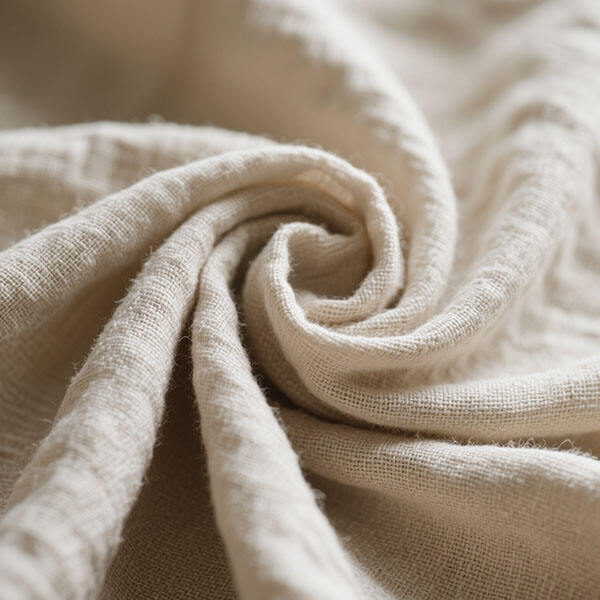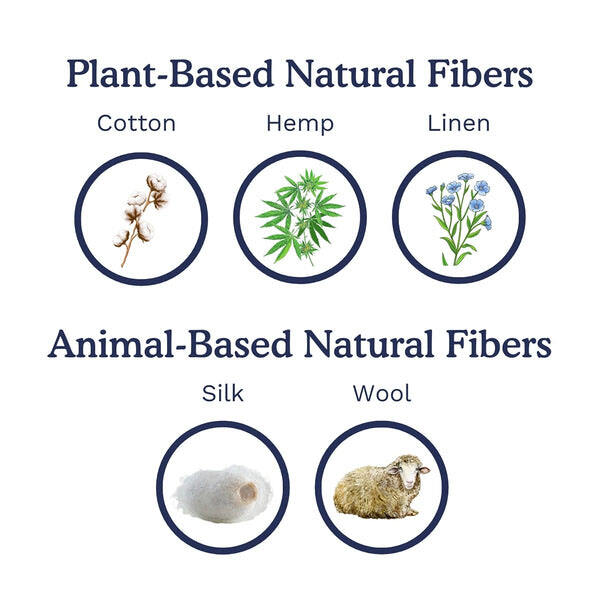Linen and wool fabrics found in Swiss lakeside dwellings from the 7th and 6th centuries BC provide evidence of the use of natural fibers. Hemp is one of the oldest domesticated fiber plants, and China began to cultivate hemp as early as 4500 BC; the cultivation and weaving of flax was introduced to Egypt in 3400 BC. Cotton spinning technology in India dates back to around 3000 BC, showing its long history of textile production. Silk production began in China around 2640 BC, and people were raising silkworms and spinning silk, making silk one of the oldest luxury textile fibers, and wool has a history of at least 4,000 years. Archaeology and science have even found dyed linen fibers dating back 30,000 to 36,000 years ago, which can prove the use of plant fibers in early human clothing and textiles.
Natural fabrics such as cotton, linen, wool and silk are breathable, helping to regulate body temperature, preventing sweat from accumulating on the surface of the skin, and are suitable for all climate conditions. Natural fibers have moisture-wicking properties, which allows perspiration to escape from the skin, keeping it dry and comfortable. In contrast, many synthetic fabrics are not breathable, causing discomfort and stuffiness. Natural fabrics (silk, wool and bamboo) are hypoallergenic, which is beneficial for people with sensitive skin. Natural fibers can last two to three times longer in clothing than synthetic polyester fibers, and are renewable, biodegradable, require less water and chemicals to grow and process than synthetic fibers, and natural fiber clothing breaks down faster in landfills than synthetic fibers.

Applications
Cotton, linen, silk and wool are increasingly becoming popular fabrics for everyday clothing, luxury clothing, underwear and accessories. Fashion and functional clothing require their breathable and soft properties. Natural fibers are highly absorbent and durable. They are suitable for making sheets, blankets, towels, curtains and interior decoration, thereby improving comfort and home aesthetics. Cotton is used in the medical field because it is soft, non-irritating, sterilizable and highly absorbent. Most cotton bandages, gauze and medical masks are made of cotton. Organic cotton and bamboo fiber are suitable for baby products because they are gentle to the touch and safe for delicate skin. Natural fibers such as jute, sisal and hemp are widely used in industrial fields such as ropes, sacks, carpets and packaging materials due to their high strength and biodegradability. For sustainable development considerations, cotton or jute materials can gradually replace disposable plastics in packaging bags. Natural fabrics are very useful in quilting, embroidery, weaving and other crafts because of their texture, easy processing and easy dyeing. Wool/cotton blends are also commonly used in car interiors for their comfort, flame retardancy and moisture wicking properties. Wool is often used in sportswear, socks and underwear for its warmth, moisture wicking and antimicrobial properties to combat odor-causing microorganisms.
How to Choose Natural Fiber Clothing
Choose natural fiber fabrics according to the occasion Cotton fabrics are especially suitable for daily wear because they are soft, breathable and easy to care for, such as T-shirts, underwear and casual wear. Linen fabrics are especially suitable for summer because they are breathable and moisture-absorbing, making them suitable for clothing and home textiles. Wool fabrics are naturally warm in cold weather and absorb moisture, making them perfect for sweaters, coats and socks. If you are going to be outdoors or have outdoor activities, consider buying merino wool or blended fabrics that absorb moisture and sweat. Denim or linen denim for work is strong and durable enough for work environments and hot environments.
Fabric Care and Maintenance of Natural Fibers
Natural fiber fabrics require careful care. To avoid shrinkage and fiber damage, hand wash or machine wash in cold water and set the wash cycle to gentle. Use biodegradable detergents and avoid harsh chemicals such as bleach and softeners, which may damage the strength of the fibers. Do not overfill the washing machine to reduce friction and wear. When washing natural fiber clothing, lay it flat on a towel or hang it out of direct sunlight to avoid fading and weakening of the fibers. For best results, choose a low to medium temperature setting suitable for the fibers you are ironing; steam ironing can help gently remove wrinkles. To prevent mold growth, store natural fiber clothing in a cool and dry place and store carefully to avoid mold growth. Use cloth bags instead of plastic bags to reduce moisture accumulation and avoid moisture retention. Linen will soften with each wash, so you can accept natural wrinkles or use steam ironing to smooth them out. When handling bamboo, avoid using fabric softeners that affect its absorbency to maintain its absorbency.





 Hot News
Hot News